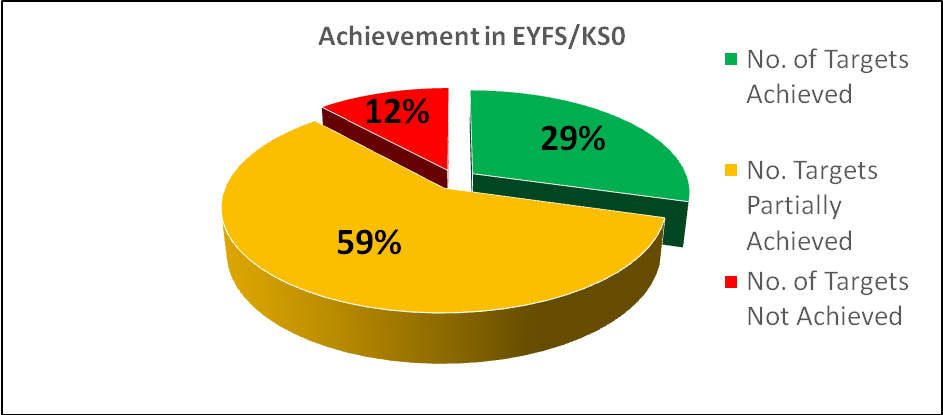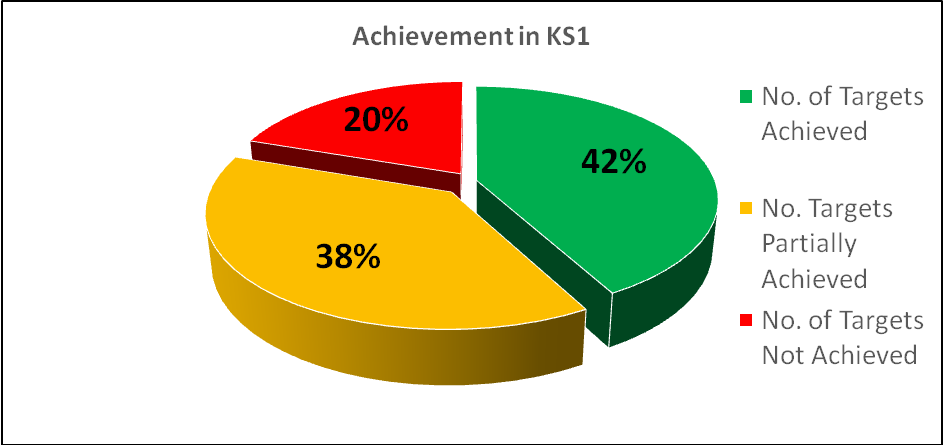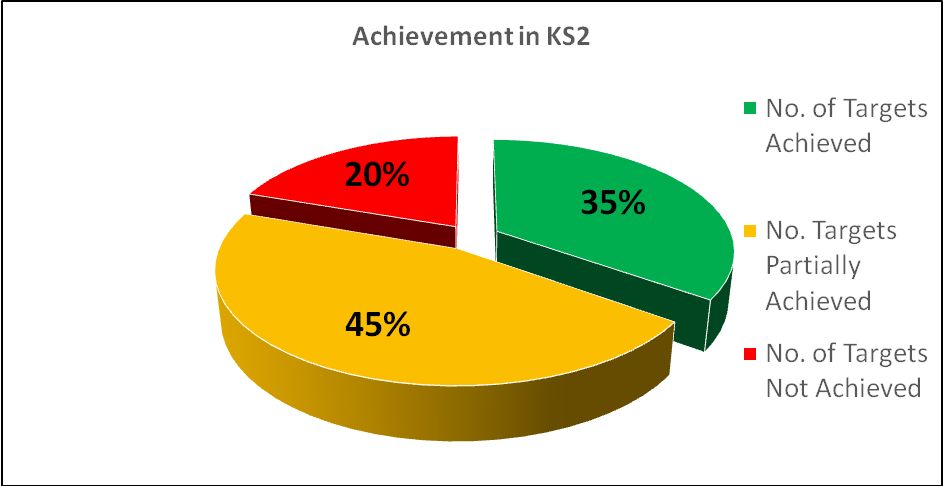Vranch House is a centre for the treatment of over 2,000 outpatients with physical difficulties, a provider of various therapies throughout Devon and an independent Day School in Exeter for children with significant physical difficulties.
Find out more...Last updated: 26/07/2024
Head of Education's Report 2016
Vranch House School Profile 2016
1. What have been the significant changes this year?
School Management
Class changes
Timetable changes
A Vranch House VIEW Curriculum
Extension to the Core Offer
1a. School Management
My sincere thanks go to Kate Moss, Head of Therapies, for doing such an excellent job as acting Head of Education in-between the departure of Pearl Barnes and my joining Vranch House. Her knowledge, experience and support have been invaluable to me in getting to know all the pupils, parents and staff of Vranch House.
For those of you I have yet to meet, I thought it would be appropriate to give you a synopsis of my experience in education to date. I started my teaching career as a Year 1 teacher at St Michael's Primary School in Reading, before moving onto Brookfields Special School (also in Reading), where I trained to become a Qualified Teacher of the Impaired (QTVI). Since then I have worked for Plymouth City Council as an Advisory Teacher for the Visually Impaired and have spent the last 5 years at the WESC Foundation in Exeter. During this time, I held various management roles including most recently that of Deputy Director of Education.
Since joining the management team at Vranch House I have been working hard to maintain all the excellent practice I have observed so far and in the rest of this report I will give details of just some of the areas of work I have embarked upon with my new colleagues since September 2016.
1b. Class Changes
As is periodically required, there have been changes to teachers and support staff in each of our three classes. As of Jan 2017, we have also opened a bespoke Nursery class here at Vranch House. Each class team is led by designated teacher (or Nursery Nurse in the case of our Nursery) and comprises a Higher Level Teaching Assistant (HLTA), a Therapy & Learning Assistant (TLA) and a Teaching Assistant (TA), as well as part-time support from our Meal Time Assistants (MTA). Where a pupil has particularly acute medical needs, these teams may also have a Health Care Assistant (HCA). HLTAs are able to deputise for the class teacher and will hold at least a Level 3 qualifications. The TLAs work closely with the Occupational Therapy and Physiotherapy staff allocated to Vranch House to ensure delivery of best practice in classes regarding postural management, positioning, exercise programs and use of specialist equipment to promote physical development.
The current staff allocation for each class is as follows:
Nursery | Class 1 | Class 2 | Class 3 |
Nursery Nurse: Jackie Beckford (Plus 2 x Multi-Sensory Impairment Workers (Virgin Care) as 1:1 support with 2 pupils in this class) | Teacher: Chloe Bond HLTA: Chelsea Armstrong TLA: Debbie Prout TA: Sandra Selley MTAs: Michala Smith, Adrian Jackson, Karen Finn and Nicola Roy | Teacher: Zoe Letten (Maternity Cover for Michelle Tomlinson) HLTA: Ronnie Lye TLA: Helen House MCA: Tammy Brown MTAs: Lorraine Chapman, Teresa Sprague, Kay Dennis | Teacher: Dee Bradshaw HLTA: Sam Woodcock TLA: Julie Lobb TA: Juliet Skillern MTAs: Charlotte Davey, Laura Madden, Kerstie Davies, Mel Lynch, Nicola Roy |
Number of pupils: 4 | Number of pupils: 6 | Number of pupils: 8 | Number of pupils: 6 |
NB: All staff allocations and pupil numbers were correct at time of printing and may be subject to change.
1c. Timetable changes
Through discussion with the teachers and support staff, it was decided that 5 formal teaching inputs per day was no longer appropriate. Our pupils require ample time to transition between lessons, assist in personal hygiene and eating routines and process new information; the 5-session day did not allow sufficient time for many of these essential functions to be performed and still provide effective learning in every session. The number of formal inputs per day has been reduced on class timetables to 3, which allows the time required for postural management and all other mentioned routines to take place at the pace dictated by the needs and abilities of each individual pupil.
1d. A Vranch House VIEW Curriculum
In order to achieve the wide spectrum of aims and aspirations for our pupils at Vranch House, as set out in our ‘Curriculum Policy', we have begun to develop the ‘Vranch Individual Education and Wellbeing (VIEW)' Curriculum. It is important to note that the staff at Vranch House are working hard to depart from a divided model of Education versus Therapy and subject-driven methods of teaching. We have reviewed at length the needs profile of our pupil cohorts and curriculum models used by other leading schools, we have defined three key ‘domains' and seven areas of development that replace traditional ‘subjects'. A broad outline of this curriculum can be seen below:
Domain | Vranch Individual Education and Wellbeing (VIEW) Curriculum | ||||||||
Communication & Cognition |
Physical Development |
Experience and Expression | |||||||
Areas of development | Language & Social communication - Non-verbal skills - Language for different purposes - Cause & effect - Split attention - Turn taking, eye contact - Initiating ‘conversation' with peers - Maintaining a dialogue | Understanding and using language
- Phonology - Morphology - Syntax - Semantics - Pragmatics
- As receptive, with ‘usage' imperative
| Self-Advocacy - Impulse control - Emotional control - Flexible thinking - Working memory - Self-monitoring/ regulation - Planning and prioritising - Task initiation - Organisation - Communication aids / VOCA | Physical wellbeing - Body schema/map - Weight bearing - Changing position - Physiotherapy and OT plans - Core strength - Recognising and expressing pain/discomfort - Endurance and dexterity - Personal hygiene routines | Working towards independence - Orientation and mobility - Developing modes of movement - Engaging with safe and unfamiliar places - Concept of money - Overcoming obstacles | Integrating the senses - Proprioception - Cause & effect - Residual Vision - Residual hearing - MSI - Tactile and Haptic - Smell & Taste - Sensory Integration - De-sensitising | Exploration and creativity - Cooking - Movement to music - Making music - Exploring art media and methods - Craftwork - Horticulture | ||
For further details on the VIEW Curriculum and how this relates to the Early Year Foundation Stage (EYFS) and National Curriculum, please see our Curriculum Policy at http://www.vranchhouse.org/about-vranch-house/downloads/curriculum-policies/ or contact me directly for a hard copy of this policy.
1e. Extension to the Core Offer
With the 75% of pupils at Vranch House having a visual impairment, and at least half of these pupils having a Cerebral Visual Impairment (CVI), it was agreed at Management Team level to appoint a 0.5FTE Visual Impairment Specialist Support Assistant (VISSA) to assess and meet these needs. The VISSA, Jackie Beckford, is working directly under myself, as I am also a Qualified Teacher of the Visually Impaired (QTVI), and has been working closely with teachers and therapists. This new capacity to meet visual impairment needs of our pupils represents a new area of enhanced provision in addition to the Core Offer of Vranch House School.
2. Outcomes for pupils at Vranch House School
Progress and Achievement of our pupils
Discontinuation of the P Levels form of assessment
2a. Progress and Achievement of our pupils
As part of the process for drawing up the School Development Plan (see point 3 below), I undertook a scrutiny of the setting of targets for Annual Review and the achievement against these targets, in the academic year 2015-2016. All such targets can be assessed as having been
- ‘Achieved' - all areas of the target have been met
- ‘Partially Achieved' - some but not all aspects of the target have been met
- ‘Not Achieved' - no aspects of the target have been met
Below are three graphical representations of the percentages of targets achieved, or otherwise, for each Key Stage cohort for the academic year 2015-2016:



What this represents on real terms is that for the last academic year, across all key stages, at least one third of all targets set were ‘Achieved' by our pupils, between one third and a half of all targets set were ‘Partially Achieved' and, on average, less than 1 in 5 targets were ‘Not Achieved'.
Those targets ‘Partially Achieved' were in-part due to mild to moderate changes in individual pupil needs and a some disruption in one key therapy that academic year. Another contributing factor to this seemingly high rate of ‘Partially Achieved' targets was also in-part due to targets being phrased in such a way that they could not be met within the time frames stated e.g. the target set addressed more than one-year of potential development and was not sufficiently broken down to state the ‘small step' in this development that was achievable in one academic year. Of those targets ‘Not Achieved', some were due to recurrent or chronic pupil illness or the unforeseen need for some pupils to have medical intervention that rendered them unable to meet the specifics of the target.
It is my goal for the forthcoming academic year to increase the number of targets ‘Achieved' and reduce the number of ‘Partially Achieved' targets by working closely with the teachers to ensure all targets set are observable, focussed in term of progress anticipated and realistically achievable within an academic year (or with few exceptions, by the end of a Key Stage). I will also be working with staff to reduce the number of ‘Not Achieved' targets by ensuring outcomes are not critically dependent on a pupil being in full health for the whole academic year. I have phrased these goals as action points in the School Development Plan, see item 3. Below.
2b. Discontinuation of the P Levels form of assessment
In 2016, the Standards & Testing Agency recommended that schools discontinue their use of the P-Levels for assessing the progress of pupils who are working below the standard of the national curriculum tests (Rochford 2016). The seven ‘Aspects of Cognition and Learning' for assessment for pupils with severe or profound and multiple learning difficulties (SLD/PMLD) are met by the VIEW Curriculum as detailed in the matrix below:
| VIEW Curriculum | ||||||||
Language & Social communication | Understanding and using language | Self-Advocacy | Physical wellbeing | Working towards independence | Integrating the senses | Exploration and creativity | |||
Aspects of Cognition & Learning | Responsiveness | X | X | X | X |
| X | X | |
Curiosity | X | X | X | X | X | X | X | ||
Discovery | X | X | X | X | X | X | X | ||
Anticipation | X | X | X | X | X | X | X | ||
Persistence | X | X | X | X | X |
|
| ||
Initiation | X | X | X |
| X | X | X | ||
Investigation | X | X | X | X | X | X | X | ||
For further details on the VIEW Curriculum please see our Curriculum Policy at http://www.vranchhouse.org/about-vranch-house/downloads/curriculum-policies/ or contact me directly for a hard copy.
For further details of the final report from the Rochford Review of P Levels see: https://www.gov.uk/government/uploads/system/uploads/attachment_data/file/561411/ Rochford_Review_Report_v5_PFDA.pdf
3. School Development Plan
The School Development Plan (SDP) is written by the Head of Education each year after evaluating the successes, challenges and areas for improvement within the school and agreed with the Management Team. I have completed the plan for 2016/17 and this plan in divided into 5 key areas:
A. Effectiveness of Leadership & Management
B. Quality of Teaching, Learning & Assessment
C. Personal Development, Behaviour & Welfare
D. Effectiveness of EY Provision
E. Outcomes for Pupils
The main points of focus for this academic year under these areas are as follows:
Area for development | Action for development |
A. Effectiveness of Leadership & Management | A1. Establish a new cycle of Observation of T&L and Performance Management A2. Review Induction programme for new staff A3. Issue Parent, Pupil and Staff satisfaction questionnaires |
B. Quality of Teaching, Learning & Assessment | B1. Sufficient challenge for pupils to be evident in planning and delivery B2. Increase emphasis of pupil individual learning goals across a day B3. Improve use of Augmented & Alternative Communication (AAC) across the school |
C. Personal Development, Behaviour & Welfare | C1. Improve Parental engagement with pupil education at Vranch House C2. Reinstate a forum to gather Pupil Voice |
D. Effectiveness of Early Years Provision | D1. Simplify evidence capture and collation against the EYFS |
E. Outcomes for Pupils
| E1 Sufficient challenge for pupils to be evident in planning and delivery E2. EHCP Outcomes to state what the child will be able to achieve by next AR or end of KS E3. Increased parental and, where appropriate, pupil engagement in the composing of Outcomes |
The questionnaire for parents will be issued in February 2017 and will broadly follow the Ofsted format, as per previous surveys, to gauge parental satisfaction with all we deliver here under the Core Offer at Vranch House School.




